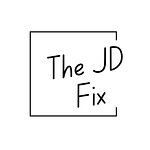You’ve seen them—the job descriptions that read like they were written by a robot, then photocopied in a legal office, and pasted straight onto a careers page. No personality. No clarity. No real draw for top talent.
This week, I had the chance to unpack all of that with Rob Kelly, CEO and co-founder of Ongig, on my podcast The JD Fix. We talked about why job descriptions are still stuck in the past, how much they’re actually costing companies, and how AI (done right) might just help fix it.
If you care about attracting the right people—or keeping your own job in the age of AI—you’ll want to keep reading.
Note: We went longer than 15 minutes on this episode…I had to capture as much of Rob’s knowledge as I could. He is a busy guy!
The $30 Million Hire: Why Your JD Might Be Holding You Back
Rob shared a story that started it all: he was in the audience during a rare joint appearance by Steve Jobs and Bill Gates. He asked them what advice they had for entrepreneurs.
Jobs' answer?
“Be a great talent scout.”
That stuck with Rob. A few years later, he wrote The 80/20 of Hiring Superstars, where he breaks down the math behind top performers. Spoiler: one out of every 100 hires could be worth $30 million to your company. The next three? About $1.9 million each.
So if your job ad is garbage, you’re not just losing out on applicants—you’re potentially losing millions in future impact.
“We Treat Them Like Ads”: The Secret to Great Job Descriptions
Rob's background is in content and marketing, so it makes sense that he views job descriptions as ad copy, not HR forms. He believes the biggest sins companies commit include:
Copy-and-paste job content from internal systems (he calls this “sloppy-and-paste”)
Inconsistency across job posts (different headers, formatting, tone)
Missing info—especially salary, benefits, and work flexibility
It’s not just a bad look. These gaps actively turn away your best candidates—especially the “A-players” who don’t have time to guess what they’re getting into.
Cleansing: The First Step in Fixing Job Content
Rob uses the term “cleansing” to describe what Ongig does when companies first upload their job content. Think of it like a deep-clean for your JDs: formatting, tone, language, and even inclusivity are all reviewed and refined.
He shared two great examples:
A Fortune 20 company that needed to compete with Tesla and Meta—they cleansed all JDs for consistent headers, first-person/second-person voice, and team-specific context.
An insurance company trying to hire more women—they removed male-coded language, added overlooked benefits like parental leave, and rebalanced the tone for broader appeal.
The result? Better candidates, more diversity, and job postings that actually work.
AI Can Help… or Make Things Worse
Rob’s been working with AI in job descriptions long before GPT hit the scene. He even consulted with Google years ago on their job search AI.
His take now? AI is powerful, but risky when used blindly.
“If your JD is already bad, AI just helps you write a bad job description faster.”
At Ongig, they use AI to assist—not replace—human editors. The result is speed and quality, with tools that flag inconsistencies, bias, and missing info before a posting goes live.
The One Thing You Should Do This Year
Rob’s advice for every TA leader and HR team?
“Book a free call with Ongig. Show us your current process, tell us how you're using AI. We'll give you honest advice—no strings attached.”
Whether it’s Ongig or another trusted partner, this kind of check-in can help you avoid pitfalls and position your team as forward-thinking (and indispensable) as AI reshapes the hiring landscape.
Want More?
If this post got your wheels turning, check out:
The full 80/20 hiring breakdown
Rob’s newsletter: Media and the Machine, covering AI and content
Or, explore Ongig’s job description software if you're ready to take action
Final Thought
Job descriptions are one of the most important pieces of content your company puts into the world. They deserve the same love and strategy as your brand, your campaigns, and your pitch decks.
If you’re serious about attracting top talent, start by treating your JDs like the multimillion-dollar assets they really are.











Share this post